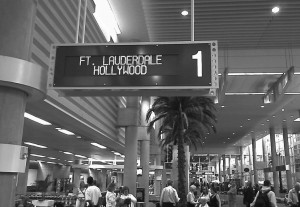By Paul Rubio
Since the birth of the “frequent flyer” in 1981, skepticism has clouded the longevity of airline loyalty programs. Nevertheless, not economic turmoil, terrorism, oil spikes nor bankruptcies have crushed these rewards juggernauts. Frequent flyer programs and their mileage offspring are here to stay. The terms and conditions of earning and using miles, however, are here to change. According to mileage guru and frequent flyer extraordinaire Gary Steiger of www.freefrequentflyermiles.com, collecting and spending frequent flyer miles has become a skillful economic game, but it’s still not difficult to maximize your rewards within the binding constraints of the small print.
Rack ‘em Up!
Inflated credit card bonuses. Rising from the depths of the recession – and swimming in government handouts – banks and airlines have teamed up to offer the most generous credit card signup bonuses in history. A 100,000 British Airways bonus mile promotion from Chase, and Citibank’s similar enticement of 75,000 American Airlines Aadvantage miles, have set a precedent for more outrageous offers to come in late 2011. Search Google to find these amazing credit card offers. Elite status multipliers. Loyalty to an airline eventually equates to a mileage multiplier – and usually a handful of free upgrades. For example, those who reach Gold status on Continental or Platinum on American Airlines (50,000 miles flown in one year) earn a 100% mileage bonus on all miles flown on the respective airline. Promotion Registration. Airlines often tantalize consumers with bonuses on new and specific routes, the use of hotel, car rental and shopping partners, or the completion of a suite of activities during mileage marathons; most of these bonuses require registration. Browse the “bonus offers” section of your chosen airline before booking your flights to find possible extras, or sign up to receive e-mails from mileage gurus like Gary through Websites like www.freefrequentflyermiles. com.
Spend and Save
Off-peak reward discounts. A major perk for traveling during an airline’s offpeak calendar is more value for your miles. US Airways lowers the mileage between the US and Europe from 60,000 to 35,000 round-trip in January and February, while American Airlines lowers it to 40,000 between October 15 and May 15; Free Spirit Mastercard holders can fly to any destination less than 1249 miles away for 5,000 miles round-trip during certain times of the year (Sept., Nov., Dec. and May). Use and abuse partners. Take a closer look at your favorite US-based airline partner reward chart and look for the bargains. While earning miles directly on foreign airlines is diffi cult, partner availability is often high on foreign airlines. One World Alliance airlines charge only 10,000 miles for internal oneway flights within Japan, Peru and Argentina, which normally cost $200-$400 each. Continental Airlines charges only 30,000 miles for a business class round trip ticket between North and South Asia on partners Asiana, Thai Airways and Singapore Airlines. “I just returned from a wonderful hiking trip in Bavaria and Switzerland, flying San Francisco to Munich on Lufthansa and returning from Zurich on Swiss Air in business class, using U.S. Airways miles, though I have never even flown on a U.S. Airways flight,” explains Gary.
Avoid taxes and fees.
It doesn’t really feel like a free ticket when taxes and fees amount to nearly $400.00 per person. British Airways Executive Club and Virgin Flying Club are notorious for charging outlandish taxes and fees with reward tickets. Miles from these two programs are better used with their US-based partners. Avoid miles hording. Miles do not earn interest. They even expire in short timeframes. The inception of the tiered rewards system, like the one used by Delta Airlines, now “makes tickets more expensive in terms of miles, thus devaluing the miles already earned,“ says Gary. Future changes are not likely to work in the consumer’s favor, so spend your miles now!


